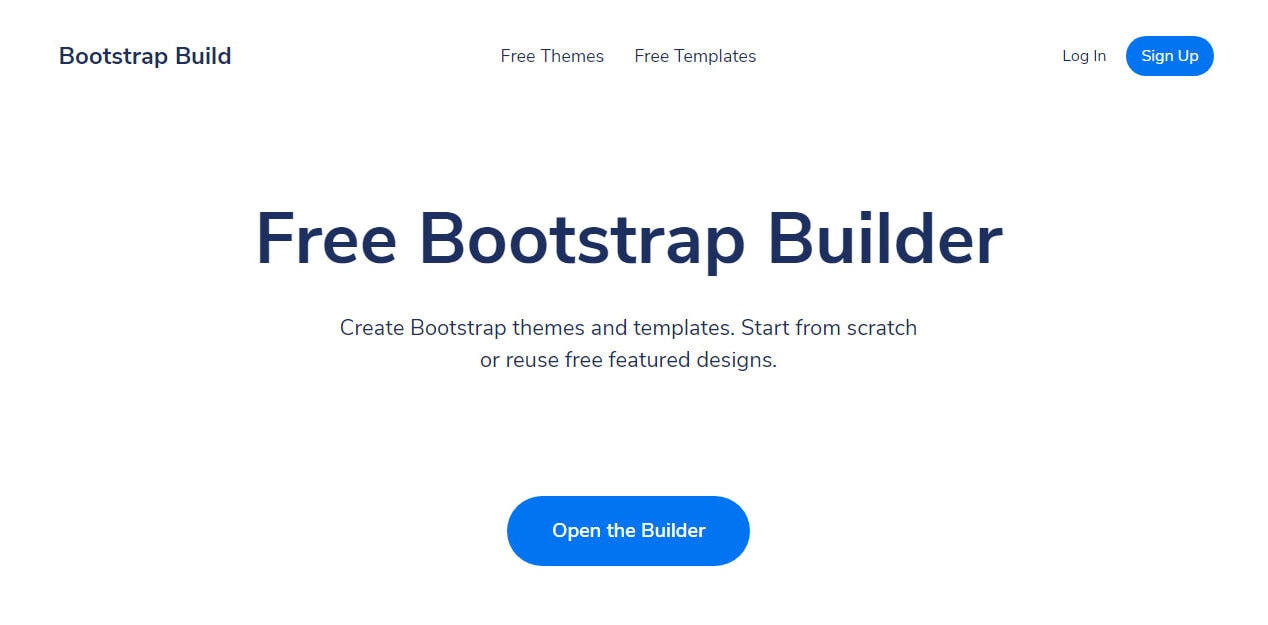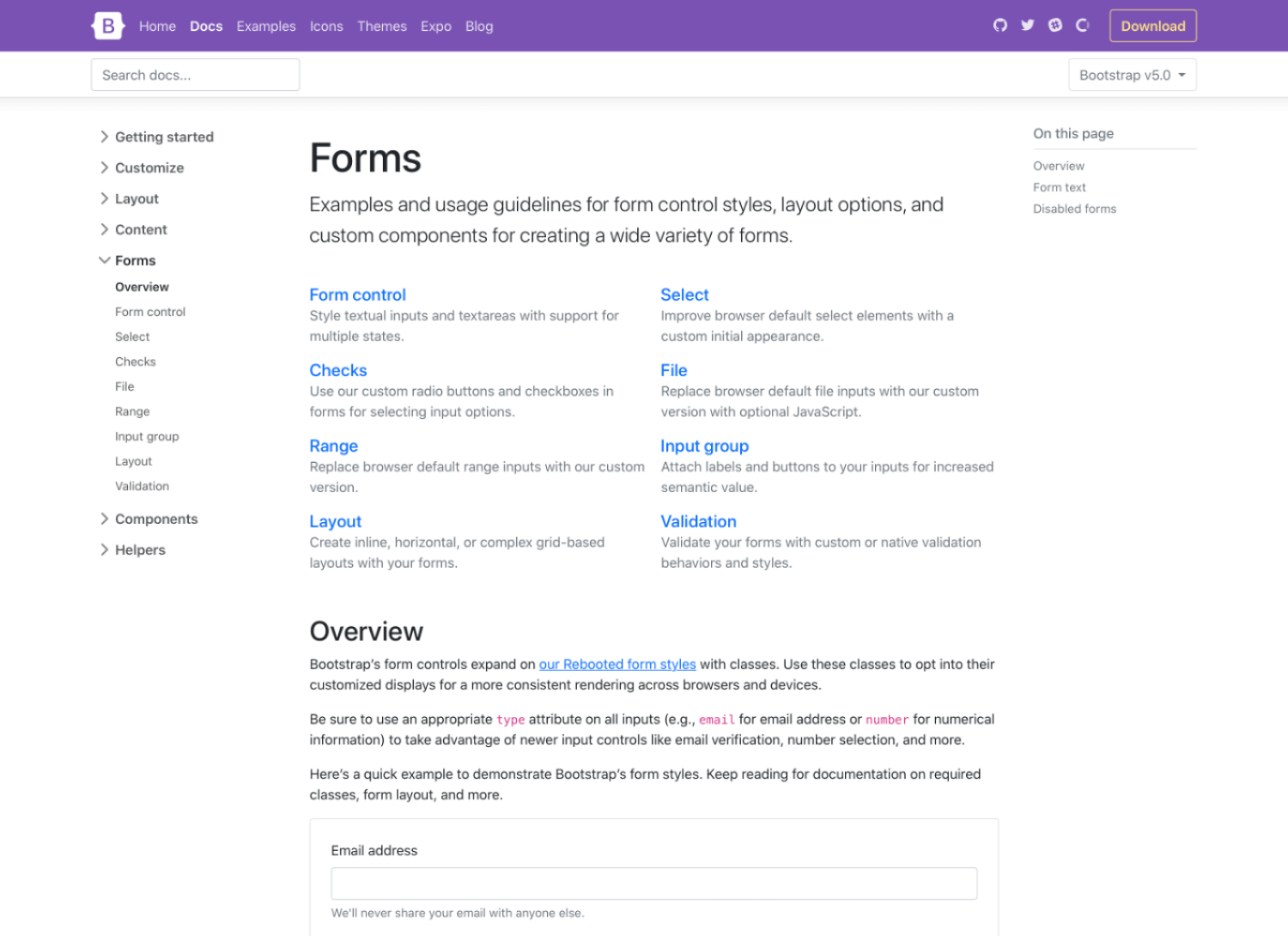

- #BOOTSTRAP 5 FORM BUILDER HOW TO#
- #BOOTSTRAP 5 FORM BUILDER INSTALL#
- #BOOTSTRAP 5 FORM BUILDER CODE#
- #BOOTSTRAP 5 FORM BUILDER FREE#

In the “Form Actions” tab you can set the pre or post form submission hooks such as Email, Webhook and more. The generated form comes with various options where you can edit the form and view the submitted data.

Once you build your form, hit the “Create” button and you will land on the generated form. You can see that it lets you modify the form theme, validation, and other modifications. Now, if you pick a form element from the left-hand side and drop it into the middle, you will see the following dialog box. You can set the form name along with other attributes. It contains the four sections such as “Basic Components”, “Special Components” and more. You can see there is a panel on the left-hand side that contains the HTML element for the forms. Now, click on the “New Form” button and create the first form.
#BOOTSTRAP 5 FORM BUILDER HOW TO#
So, let’s see how to create forms in this form builder.Īfter login, you will land on the following page. It is extensible and provides a RESTful interface for third-party apps. The whole ecosystem of this form designer is based on components and developer-friendly. This segment describes the working mechanism of Form.io. You can login with the credentials that you entered during the installation process. You can access the application in the browser at the following address.

This command will show the following output with some user prompts:
#BOOTSTRAP 5 FORM BUILDER INSTALL#
Upon a successful clone, run the following commands to install the dependencies: cd formio npm installĪfter that, run the application with the following command: npm start
#BOOTSTRAP 5 FORM BUILDER CODE#
Now, run the following command to clone the source code of the this application: git clone Once the above pre-requisites are installed, open the terminal run the following commands: mkdir formiocd formio It is easy to set up as it provides comprehensive documentation regarding deployment and development.īefore going further, make sure you have installed the following pre-requisites. In this section of the form builder tutorial, we will see how to set up Form.io on localhost.
#BOOTSTRAP 5 FORM BUILDER FREE#
However, this free HTML form maker is written in JavaScript and all the source code is available at Github.įorm.io provides wide-range of features. There are provisions to control the submission and access of the forms. Moreover, users can modify the look & feel of the form using CSS. Users can inject custom JavaScript for enhanced functionality. There are various HTML elements on one side that users can drag and drop to build the needed form. As far as the user interface is concerned, it offers a logical user interface with drag and drop features. Further, this HTML form builder is based on serverless architecture, and users can generate and embed forms into the other applications by just placing a single line of code. Form.io provides OAuth authentication and lets users log in using popular identity providers such as Google and Facebook. This HTML form creator offers role-based permissions for users and forms. It is self-hosted, multilingual, and multi-tenant software. In this blog post, we will explore this bootstrap form creator along with its setting up process on localhost by covering the following points.įorm.io is a free open source form builder. In the recent past, we published an article that covered the Top 5 Open Source Online Form Builders in the year 2020. Form.io is an open source bootstrap form creator that provides form building and data management capabilities. Now, it becomes a hassle to build, manage these forms and the submission data. There are many websites that may contain many forms such as contact form, complaint form, customer feedback form, admission form, and more. However, corporate sectors use online forms to fulfill needs related to data collection. Next, data management is another critical task and it demands immense attention. Therefore, the amount of data depends on the reach to the relevant audience. On the other hand, enterprise organizations tend to collect customer’s data about their products and services. Sometimes it is about providing services and sometimes it is about collecting data or feedback. This engagement could be either physical or virtual. In the fast growing business needs, there are a lot of operations that directly belong to the public dealing and engagement. Formio is self-hosted, API driven, provides forms and data management. Build task-specific and customizable forms using a drag and drop HTML form builder.


 0 kommentar(er)
0 kommentar(er)
